Popular on Food52
Continue After Advertisement
19 Comments
Cristen G.
August 30, 2015
I love CRUNCHY Almond Butter... how should I adapt your recipe to get the best crunchy version? Also, what do you think about going a more savory route by using differently flavored salts--smoked, or blended with roasted dried and finely ground green or red chilies (Aleppo, Anaheim, Bird's Eye, Cascabel, Cayenne or Chile de Árbol, Fresno, Guajillo, Hatch-a New Mexico Green Chile cultivar, Jalapeno, Lemon Drop, Malagueta / piri-piri, Manzana or Rocotillo, Mirasol, Poblano, Pasillo, Santa Fe Grande / Guero, Serrano...)
Helen M.
November 25, 2015
For crunchy peanut butter I have successfully removed about 1/4 of the roasted nuts and chopped them to an appropriate size. Then I blended the other 3/4 of the nuts to butter, and added back in the chopped peanuts. (I had previously read a recipe which encouraged you to remove the 1/4 at the nut meal stage from the food processor - but this just adds graininess to the butter, not crunch.) While my method worked well with peanuts, perhaps with almonds it might be better to use toasted blanched almonds for the crunch? I have only gone for crunchy with peanut butter so far.
jon
March 20, 2015
overtime i have made peanut butter it turns out "grainy". is there a way to make it smooth and not "grainy"
Helen M.
November 25, 2015
Blend it for longer. When it looks like it is the correct consistency, just blend it for a while longer - it starts to shine and look very liquid - but it will firm up a bit when it cools. I know some people say 6-7 minutes of blending time, but I have spent up to 15 on butters with roasted nuts, and way longer with raw (not even worth it, unless you use a higher fat nut, like macadamia). I always thought my processor was just rubbish and worn out, but I think this is generally advisable.
Cindy V.
March 26, 2014
All of the times i have made nut butters, I have never had to add oil. I generally use raw nuts and process them for 8-10 mins until smooth. It seems to take that long for the nuts to release their oil.
Chanel C.
February 7, 2014
I am in Colombia, so I am unsure that I can find nut oil. Can I use olive oil instead, or another oil?
Hisham A.
January 19, 2014
I make my own peanut butter. I hate store bought ones.
I have to experiment with more nuts.
I have to experiment with more nuts.
Nicole D.
January 19, 2014
The ginger honey almond butter sounds incredible. Thanks for the great tips, Marisa.
Anj
September 12, 2013
I have been making my own nut butters for over 3 years now. Recently friends have urged me to sell at local markets. How can you jar nut butters to sell at room temperature?
Babs I.
March 4, 2013
I have been making cashew butter for the last few months, toasting the cashews first. It takes between 2-3 TBSP of oil, and comes together even more easily than the almond butter I make.
leonard S.
October 2, 2012
Is it possible to do keep nut butter for longer if it's jared properly? Would it work to do the same preserve technique used for jams or would you advise something else?
Thanks!
Thanks!
Helen M.
November 25, 2015
Honestly, I also had fear about old nut butter, but I forgot about a chocolate hazelnut butter I made for Easter and, while it had separated a bit (like any unstabilised nut butter eventually should), it was perfectly fine, even five months later.
cinders51
June 15, 2012
I followed the recipe exactly, ended up adding THREE tablespoons of walnut oil, and it's still too dry to be spreadable and nowhere near "drippy." It does have a fantastic flavor, but I don't want to keep adding so much oil that it's packed with too many calories and fat! Any ideas?
Kitchen B.
December 29, 2012
My first batch of almond butter was a disaster. I kept adding oil hoping that would result in the drippy texture I wanted. I didn't get that so added maple syrup and it seized up even more. I kept my congealed first batch to one side.
And returned to read the recipe instructions again, and extremely carefully this time. I noted that Marisa used only a tablespoon of oil in Step 4. I followed this. I also followed Steps 4 and 5 to the letter, unlike what I did in the failed batch one.
I pulsed for 30 - 45 seconds, scraping the sides and bottom. By the 4th time of pulse and scrape, I had hit a home run, with ONLY a tablespoon of oil. By the 6th time, the butter was smooth and drippy and perfectly spreadable. I sent it all into a jar and tried to figure out how to rescue my congealed batch one.
I put it all back in the food processor. I'd figured out that adding more oil wasn't it. Or maple syrup.....Purely because I stood by the sink, I reached for water and ta da.......the butter turned creamy and perfect. I just kept adding it by the spoonful till I got the consistency I wanted. And the taste was perfect.
Now I don't know how long it will keep refrigerated but I don't know that I will keep it that long anyways.
I hope this helps someone in future.
Thanks Marisa for a great recipe - I now realise I need to REALLY read recipes well before I embark on a project!
And returned to read the recipe instructions again, and extremely carefully this time. I noted that Marisa used only a tablespoon of oil in Step 4. I followed this. I also followed Steps 4 and 5 to the letter, unlike what I did in the failed batch one.
I pulsed for 30 - 45 seconds, scraping the sides and bottom. By the 4th time of pulse and scrape, I had hit a home run, with ONLY a tablespoon of oil. By the 6th time, the butter was smooth and drippy and perfectly spreadable. I sent it all into a jar and tried to figure out how to rescue my congealed batch one.
I put it all back in the food processor. I'd figured out that adding more oil wasn't it. Or maple syrup.....Purely because I stood by the sink, I reached for water and ta da.......the butter turned creamy and perfect. I just kept adding it by the spoonful till I got the consistency I wanted. And the taste was perfect.
Now I don't know how long it will keep refrigerated but I don't know that I will keep it that long anyways.
I hope this helps someone in future.
Thanks Marisa for a great recipe - I now realise I need to REALLY read recipes well before I embark on a project!
MizChef
June 10, 2012
I just made a batch of almond milk at home for the first time since learning how to do it in culinary school, so this seems like the natural next step. Homemade is way better than store-bought. Thanks for posting this.
PrayerPoseMom
June 10, 2012
I recently found your maple roasted almond butter recipe and made it. I have been spending $9 - $10 a jar on the expensive stuff, but like everyone else, I'm trying to simplify and cut back. I can't BELIEVE - honestly! - how much better the homemade almond butter is!!! Thank you for breaking down the steps; I can't wait to try creating new flavors...
claireinaustin
June 10, 2012
Thanks for this! I'm going to try it out, as we love almond butter and honey almond butter. But what is the "flat wooden turner" that you use for stirring? do you mean a wooden spoon?
Marisa M.
June 11, 2012
Claire, I mean a wooden spatula. Anything that has a flat tip, as it will allow you to easily get into the corners of your food processor bowl.
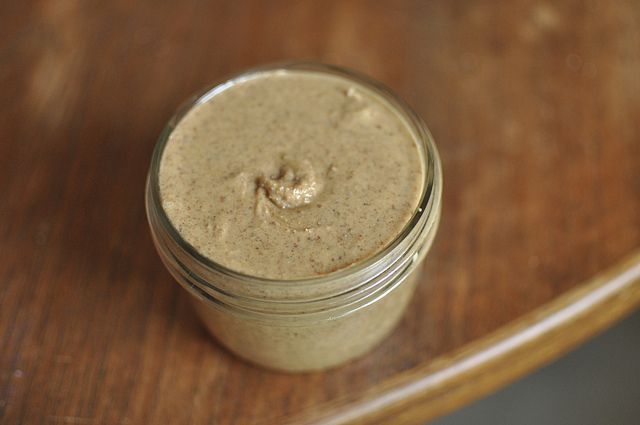
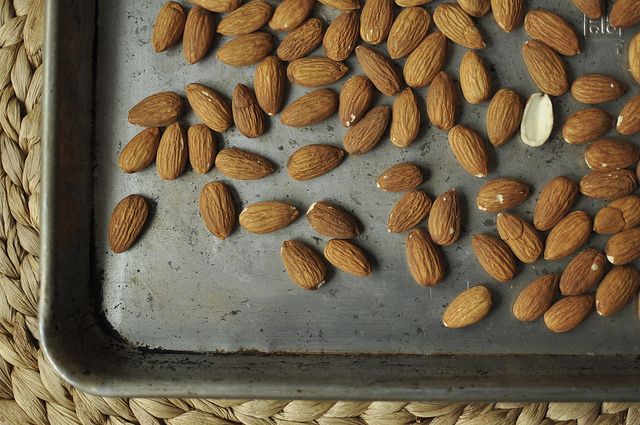
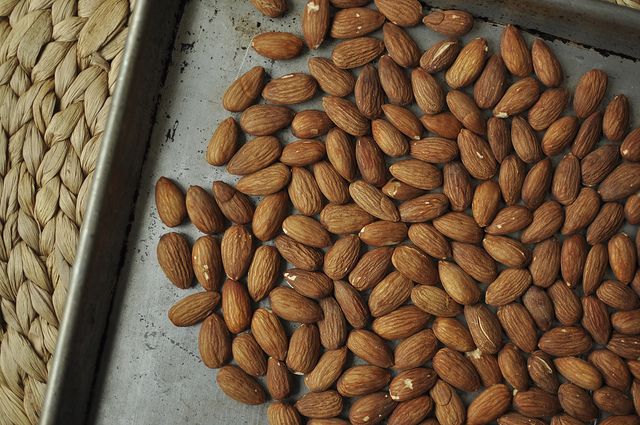
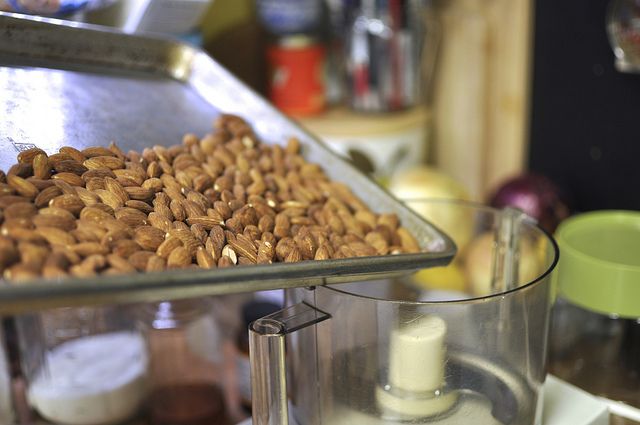
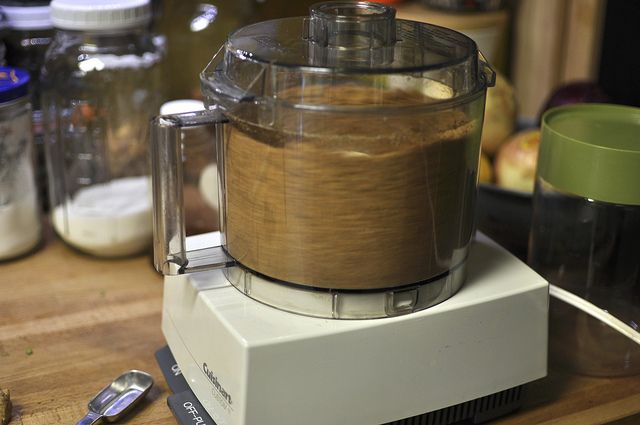
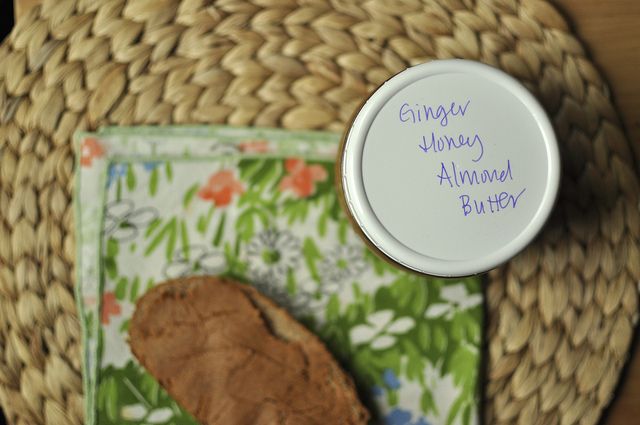

See what other Food52 readers are saying.